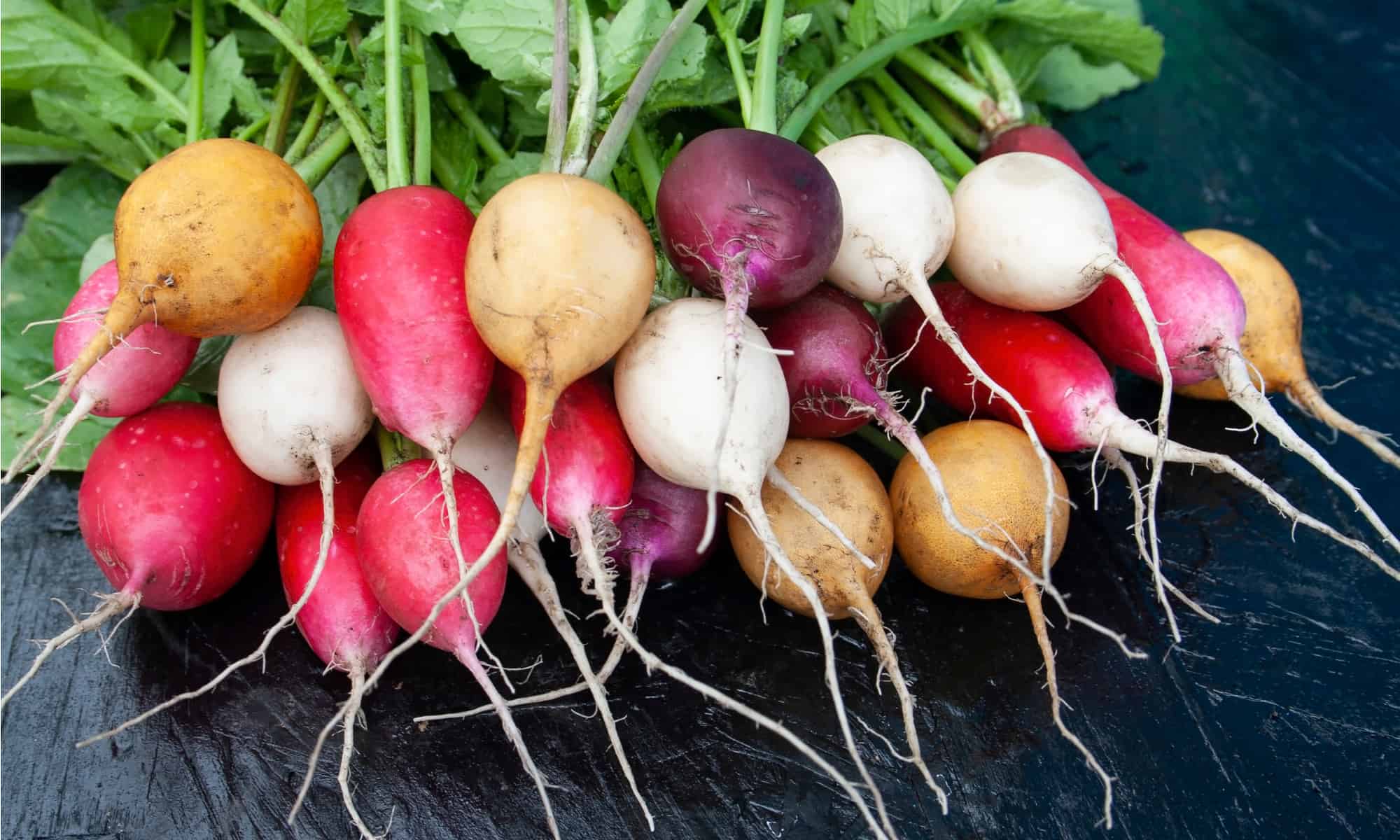Mangoes, pineapples, and bananas are the most popular fruits in the Philippines, along with numerous other crops like green beans, morning glory, carrots, and cucumbers. This Asian country also has a long list of locally grown, exotic produce. It is much more climate-adapted and tastier than the majority of European fruits and vegetables that you find in stores. When in season, you can find a lot of the native goods in stalls along the roadsides. Below we’ve listed 15 delicious vegetables native to the Philippines, including their tagalong names. Let’s take a look at what made the cut!
1. Ampalaya – Bitter Melon

Over the years, medical specialists have treated many different diseases with bitter melon.
©Emily Li/Shutterstock.com
Full disclosure: this bizarre-looking plant is actually a fruit. However, it’s used as a vegetable, so we thought it deserved a spot on the list.
The bitter melon plant also goes by the names Momordica charantia and bitter gourd. As it ripens, it grows increasingly more bitter, hence its name. However, this food is known more for its medicinal benefits than its taste.
Asia, South America, the Caribbean, and East Africa are among the regions where it flourishes. Over the years, medical specialists have treated many different diseases with bitter melon.
Numerous components included in bitter melon are good for your health. This fruit possibly reduces blood sugar, which may help with the treatment of diabetes.
Bitter melon is a supplemental or alternative medication. As a result, the Food and Drug Administration (FDA) does not approve of its use in the management of diabetes or any other comparable medical condition.
2. Winged Beans – Sigarilyas
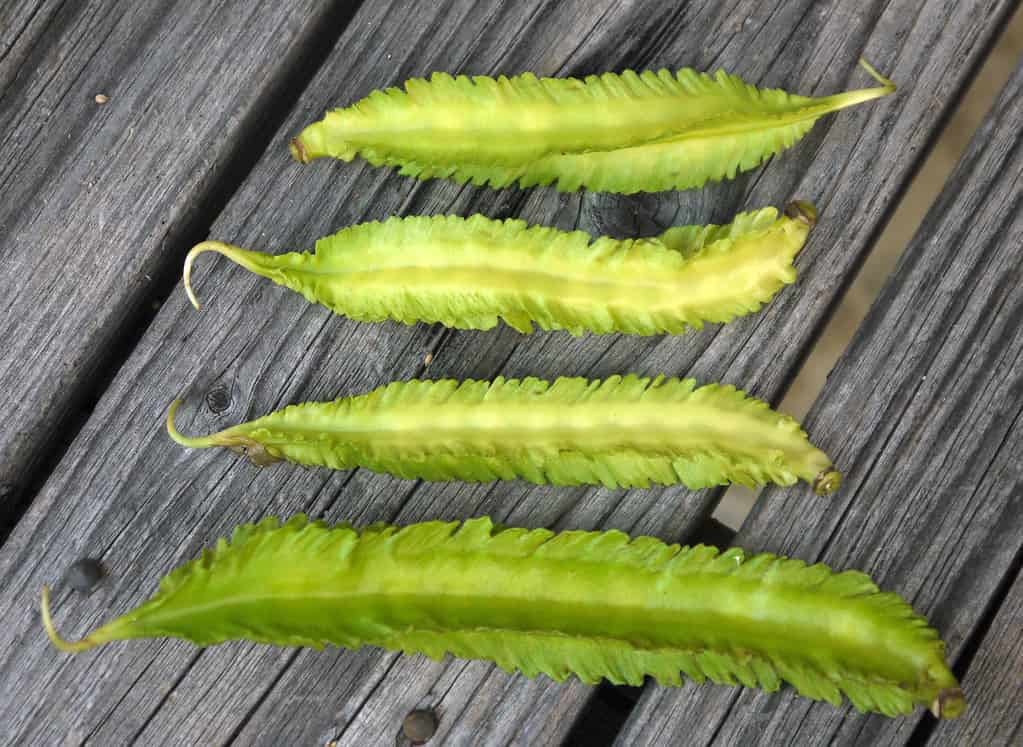
Winged beans are long, bright green, square in shape, and have four feathered, winged embellishments that run from base to tip like an arrow’s tail. The smooth, waxy surface of the pods is either straight or curved.
Although they can reach a length of 12 inches, they are often harvested between five and eight inches, first before peas have finished growing. Like many pea varietals, winged beans have a sweet flavor and a crisp, asparagus-like texture.
This veggie native to the Philippines is a great source of tryptophan, isoleucine, manganese, copper, iron, and manganese. They are also abundant in calcium, phosphorus, magnesium, zinc, and potassium.
Winged beans provide protein, fiber, complex carbohydrates, and all of the necessary B-complex vitamins when consumed. Similar nutritional compositions can be found in the roots, pods, and leaves.
3. Kabute – Mushroom

Scientists estimate there are over 140,000 different species of wild mushrooms in the world.
©encierro/Shutterstock.com
In the Philippines, wild mushrooms grow almost anywhere. The Philippines is extremely fortunate to have a wide variety of edible mushrooms. However, some mushrooms are not edible due to their poisonous qualities, so it’s important to know the difference.
Scientists estimate there are over 140,000 different species of wild mushrooms in the world. Of these, the scientific community is only familiar with 10%.
For millennia, Eastern medicine has acknowledged the advantages of wild mushrooms. Over 100 of these wild mushrooms are being studied by Western scientists right now. They want to gather data for the medical community about the various possible health benefits of wild mushrooms.
4. Malabar Spinach – Panlasang Pinoy
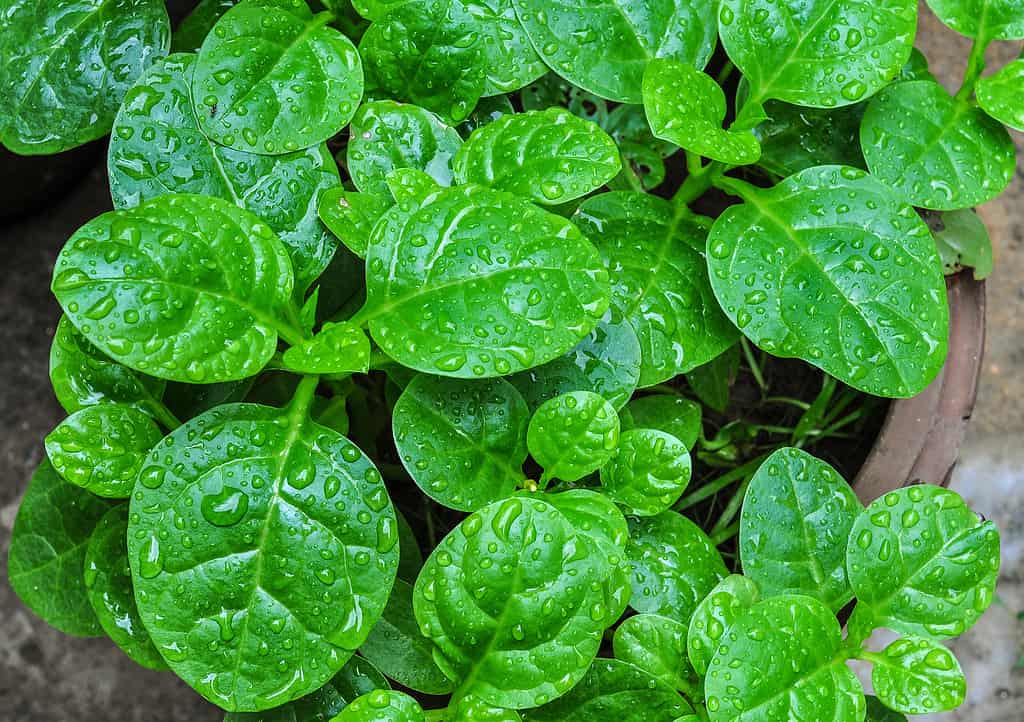
Malabar spinach (Basella alba) is a quick-growing pant with a twining vine and silky stems that may reach lengths of up to 10 feet as an annual, and even longer as a perennial.
Another tasty and nutritious vegetable native to the Philippines is Malabar Spinach. While real spinach (Spinacea oleracea), which is popularly consumed year-round, doesn’t thrive in warmer climates. In other regions of the world, Malabar spinach, or Basella alba, is a well-liked green leafy vegetable.
This quick-growing plant is a twining vine with silky stems that may reach lengths of up to 10 feet as an annual, and even longer as a perennial), though it usually stays small in most environments. The dense, semi-succulent, oblong to heart-shaped leaves are green in color, glossy, and have a gelatin-like feel.
The delicious leaves (and shoots) of Basella alba are eaten in much the same way as spinach and have a mild, somewhat peppery flavor with a note of citrus. The young leaves may be utilized similarly to cooked spinach by steaming or boiling them and adding them to a green salad or eating them raw.
You can also use this veggie to thicken dishes such as stews and soups because of its mucilaginous nature.
5. Kinchay / Kintsay – Chinese Celery

Chinese celery has a lemony fragrance, similar to the scent of western celery upon cutting off a portion of the stalk.
©SAKORNJ/Shutterstock.com
Chinese celery, also known as Apium graveolens or kinchay in the Philippines, is a crisp biennial plant indigenous to Eurasia and is a member of the Apiaceae family. Its “stalks” are much thinner than the chunky stalks of western celery. Chinese celery has a lemony fragrance, similar to the scent of western celery upon cutting off a portion of the stalk.
You’ve undoubtedly tasted the distinctively kinchay spice if you’ve consumed lumpiang Shanghai or chop suey. Chinese celery is hollow in the core and thinner than Western celery. Furthermore, the stalks are fibrous, crunchy, crispy, and delicious in texture.
The stalk-connected leaves are dark green and typically have three flat, broad lobes with sharply toothed edges that come in various sizes.
6. Patatas – Potato

Potatoes were a significant crop in Ireland by the end of the 17th century, and in Germany by the end of the 18th century.
©Val_R/Shutterstock.com
About 1800 years ago, the Incas domesticated potatoes. This was long before farmers substantially grew potatoes in South America. The conquering Spaniards discovered potatoes and brought them into Europe in the second part of the 16th century.
Potatoes were a significant crop in Ireland by the end of the 17th century, and in Germany and the western regions of England by the end of the 18th century. People consume potatoes whole or mashed, as cooked vegetables. Some process these vegetables into potato flour, which they use in baking and to thicken sauces. Additionally, Filipinos frequently roast their potatoes.
7. Sibuyas – Onion
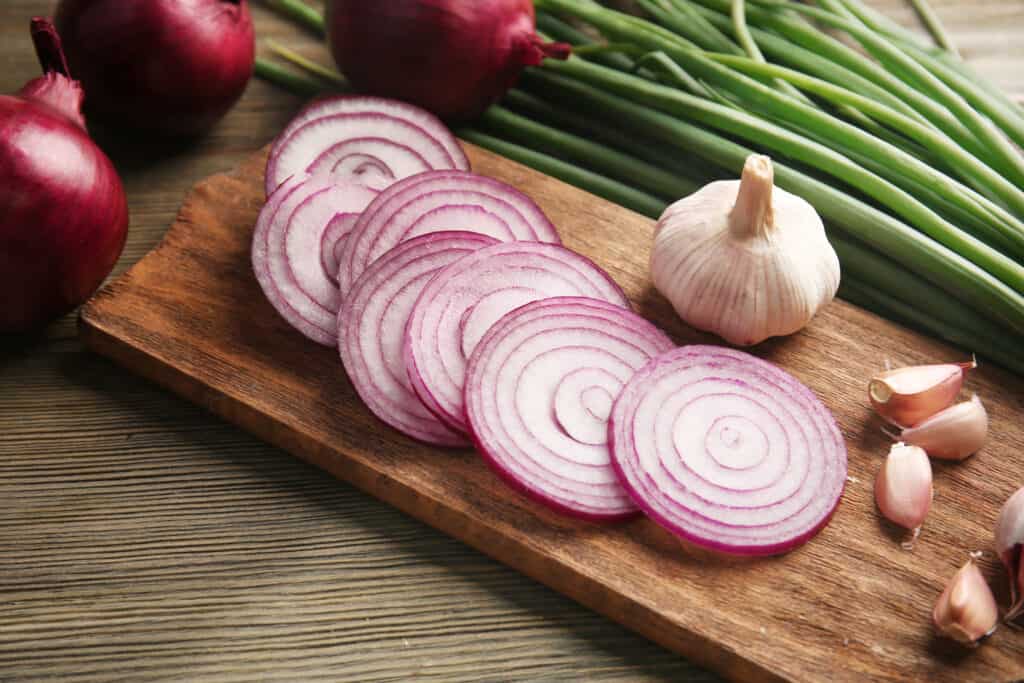
Due to their lower quantities of pyruvic acid and sulfur compounds, red onions are medium to large in size.
©Africa Studio/Shutterstock.com
The onion (Allium cepa) cultivar known as the red onion has a purplish-red exterior and white flesh. Chefs use these strong-flavored vegetables in many dishes.
Due to their lower quantities of pyruvic acid and sulfur compounds, red onions are medium to large in size and have a milder flavor than white or yellow onions. People tend to cook them gently with other meals, grill them, or eat them raw in salads.
In order to reduce the tangy flavor of cut red onion, you can immerse them in ice water for several minutes.
8. Ube – Purple Yam
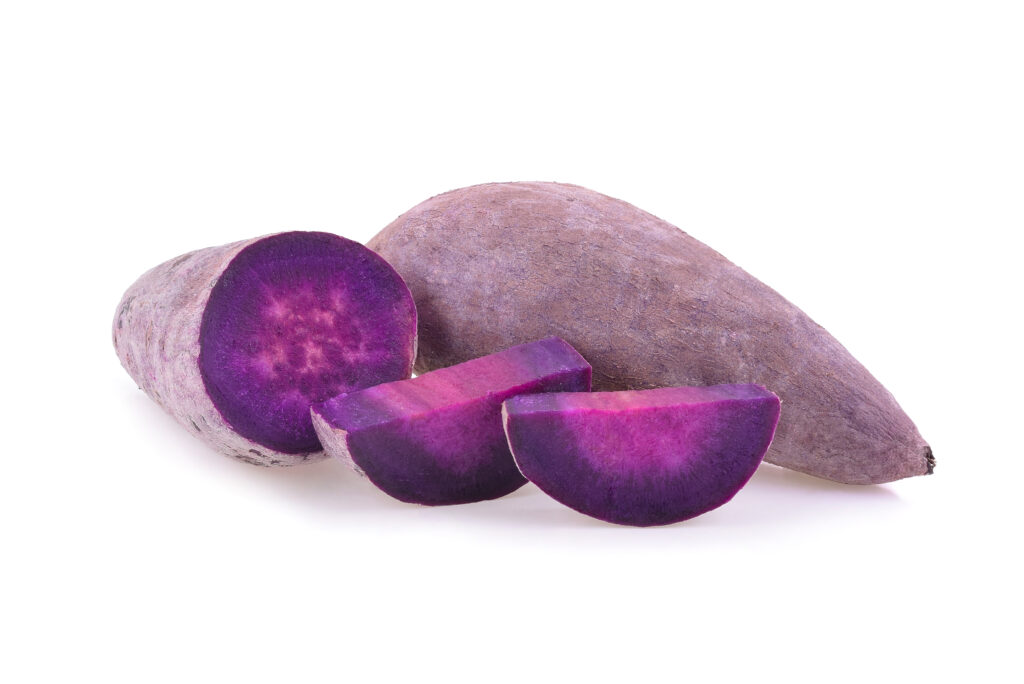
Greyish brown in color with a striking purple interior, purple yams cook to a mushy, potato-like texture.
©akepong srichaichana/Shutterstock.com
A type of yam known as Dioscorea alata is also called purple yam, ube, violet yam, or water yam. Many mistake this Southeast Asian vegetable with a tuberous root for taro root. Formerly a Filipino staple, it now grows all over the world.
Greyish brown in color with a striking purple interior, purple yams cook to a mushy, potato-like texture. They are included in a range of sweet and savory cuisines and have a pleasant, nutty flavor.
This starchy root vegetable is a fantastic source of carbohydrates, potassium, and vitamin C. They are also abundant in potent plant substances and antioxidants, such as anthocyanins, which give them their vivid color.
9. Wansoy – Cilantro
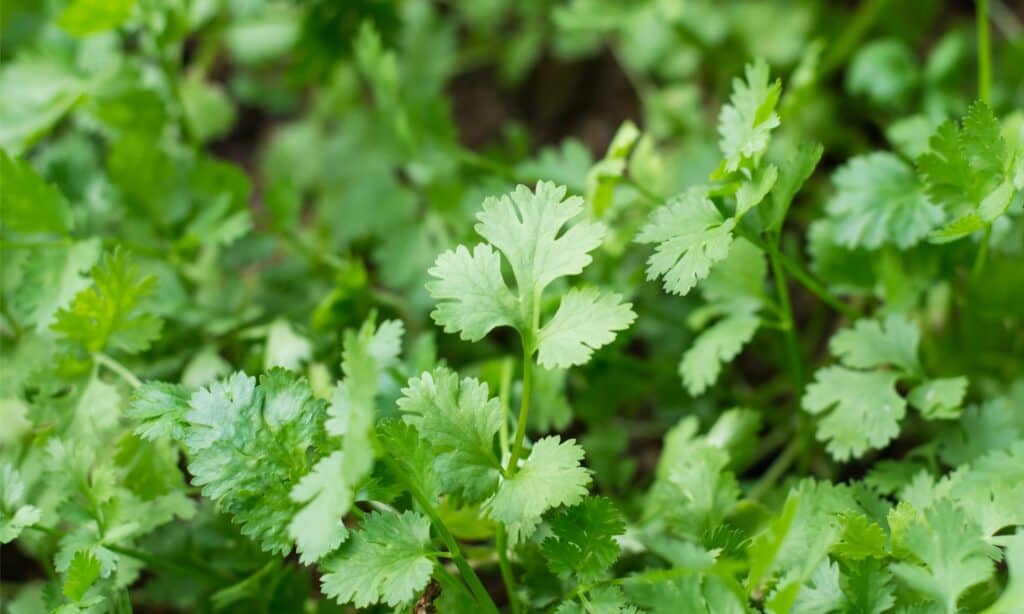
Most people perceive cilantro as having a sharp, lemon flavor, but for 25% of the population, these leaves taste like dish soap.
©iStock.com/Tevarak
The Apiaceae family, which includes parsley, carrots, and celery among its 3,700 members, includes cilantro (Coriandrum sativum L). Cooks typically use fresh leaves and dried seeds, though it is safe to eat the entire plant.
Particularly in the Philippines, cilantro has long been a staple of international cuisine. It contains lots of antioxidants. Additionally, when used to flavor food, cilantro may persuade consumers to use less salt and consume less sodium.
The majority of people perceive cilantro as having a sharp, lemon, or lime flavor, but for somewhere around 25% of the population, these leaves taste like dish soap. This is likely due to a gene that can recognize certain aldehydes.
10. Moringa – Malunggay
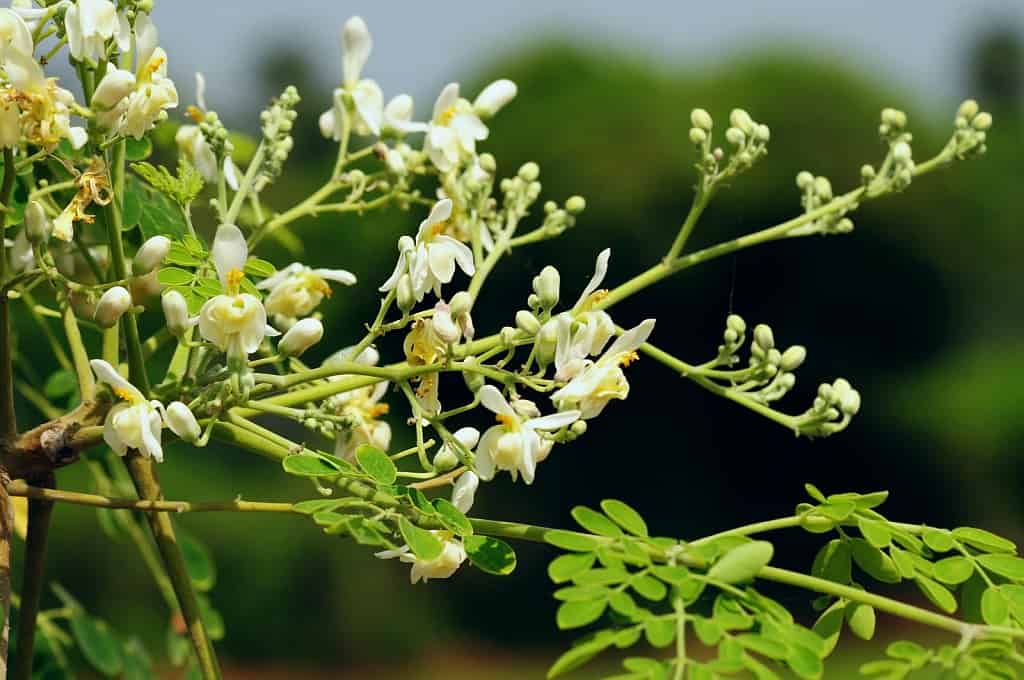
The drumstick tree, miracle tree, ben oil tree, or horseradish tree are all common names for the shrub Moringa oleifera. Because of the health advantages and medicinal qualities of moringa, it has been utilized for millennia. Moreover, it contains antiviral, antidepressant, anti-inflammatory, and antifungal effects.
The Moringa genus of shrubs and trees has many uses, including the consumption of its leaves, roots, and immature pods as vegetables. The entire plant is edible from the bark to the pods to the seeds. These leaves can be utilized either fresh or dried and powdered. When still green, the seed pods are harvested and either consumed raw or cooked.
11. Repolyo – Cabbage

Purple cabbages with smooth leaves are less common than green cabbages.
©AN NGUYEN/Shutterstock.com
A leafy green, crimson (purple), or white (pale green) biennial plant used as an annual vegetable crop for its densely leaved heads, cabbage includes numerous varieties of Brassica oleracea. Typically, a cabbage weighs one to two pounds.
Green cabbages with smooth leaves and firm heads are the most prevalent, whereas purple cabbages with smooth leaves and savoy cabbages with crinkled leaves are less common.
You can make sauteed cabbage, also known as Ginisang repolyo, as a quick and simple side vegetable for lunch or dinner. Warm white rice pairs wonderfully with this dish. Some people incorporate pork, beef, or fowl. You can also use squid rings or shrimp.
12. Patani – Lima Bean

The pods have a broad, flat top with a small curvature.
©barmalini/Shutterstock.com
In only a few nations beyond the Americas is the lima bean of significant commercial value. Both shrub and climbing variants come in a wide variety of pod sizes and shapes, as well as seed size, shape, thickness, and color.
The pods have a broad, flat top with a small curvature. The distinctive little ridges in the seed coat that extend from the “eye” make the lima bean easily identifiable. A couple of well-known lima bean types are enormous white beans and butter beans.
The plant typically grows as a perennial in the tropics and as an annual elsewhere. In contrast to other common bean types, it needs a longer growing season and warmer temperatures. In the Philippines, it is commonly referred to as “Patani.”
13. Kalbasa – Squash

They are consumed at the mature stage when the seeds have fully developed within, and the skin has solidified into a thick rind.
©iStock.com/chengyuzheng
The delicious and beautiful squash is technically a fruit! But, similar to the bitter melon, it’s prepared as a vegetable, so we’re letting it slide. Kalbasa refers to any type of winter squash in the genus Cucurbita. Winter squash is a general term for late-growing, less symmetrical, peculiar, bumpy, or blotchy types that are small to medium in size but have long-keeping properties and tough rinds.
In contrast to summer squash, they are consumed at the mature stage when the seeds have fully developed within, and the skin has solidified into a thick rind. These vegetables are solid enough to preserve them for winter usage. Unlike summer squash, which has edible rind and skin, winter squash is often boiled before eating.
14. Mais – Corn

Human food, animal feed, biofuel, and industrial raw materials all use corn.
©Tatiana Romanova-Sargaeva/Shutterstock.com
The grass family Poaceae contains the cereal plant known as corn, also known as Indian corn or maize, and its edible grain. One of the most frequently grown food crops in the world, including in the Philippines, this domesticated crop has its origins in the Americas.
Human food, animal feed, biofuel, and industrial raw materials all use corn. Native Americans in southern Mexico domesticated corn for the first time around 10,000 years ago. Dent corn, flint corn, flour corn, sweet corn, and popcorn are some examples of commercial classifications that are mostly based on kernel texture.
Dent corn, grown for animal feed and food production, is distinguished by a depression in the kernel’s crown. This results from uneven curing of the soft and hard starch that makes up the kernel.
15. Labong – Bamboo Shoot

Bamboo shoots are a well-liked cooking item in many Asian nations because of their deliciousness and wealth of health advantages.
©Food Impressions/Shutterstock.com
Young bamboo sprouts are known as bamboo shoots. They are a well-liked cooking item in many Asian nations because of their deliciousness and wealth of health advantages.
In the same way that Asian vegetables like kikurage and lotus root are gaining popularity in the West, more and more people are beginning to understand the advantages of these incredible sprouts.
The Latin name for bamboo, a species of grass plant, is Bambusa. Of all plants, it has the world’s quickest rate of growth!
The fragile sprouts emerge from the lignified soil. They have a flavor that is somewhat akin to corn and can be extremely sweet after cooking.
16. Labanos – Radish
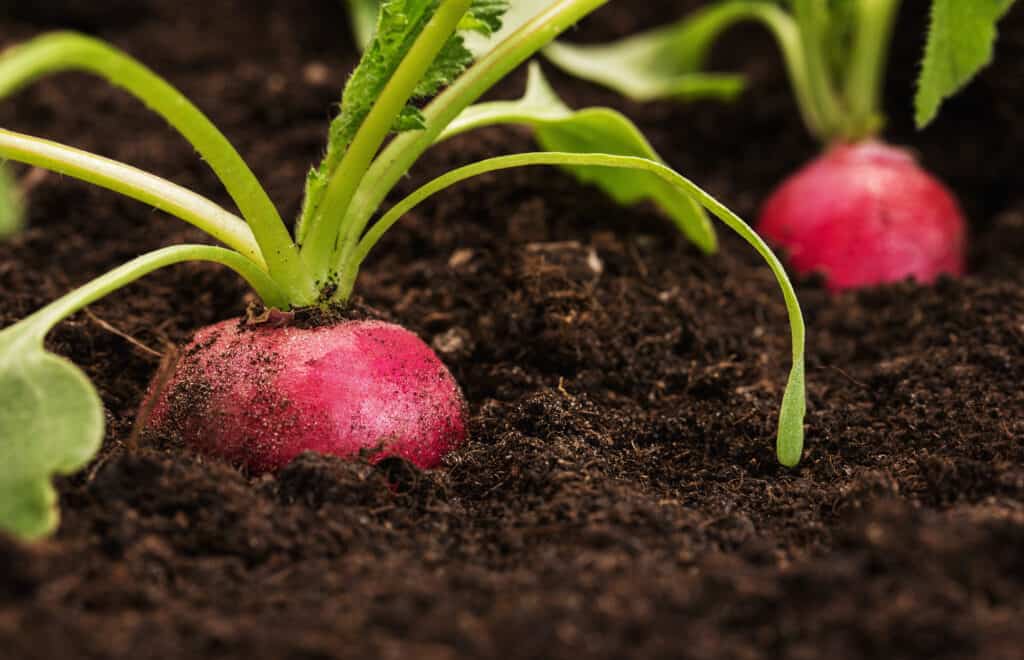
The mild meat of small, quickly growing spring radishes contrasts with the pungent flesh of the huge, slowly growing summer and winter varieties.
©iStock.com/Nastco
One of the most important vegetable crops in the Philippines is the radish (Raphanus sativus). Because of its strong flavor, consumers adore it. It can be consumed as a raw vegetable, cooked with other foods, or pickled.
The young leaves of the radish plant can be cooked like spinach and are typically consumed raw. Radish roots are minimal in calories.
The mild, crisp, firm meat of small, quickly growing spring radishes contrasts with the pungent, firmly flavored flesh of the huge, slowly growing summer and winter varieties. Winter varieties are more convenient, and can be kept in storage all winter long.
Summary of 16 Vegetables Native to the Philippines
| Number | Vegetable | Tagalong Name |
|---|---|---|
| 1 | Ampalaya | Bitter Melon |
| 2 | Wing Beans | Sigarilyas |
| 3 | Kabute | Mushroom |
| 4 | Malabar Spinach | Panlasang Pinoy |
| 5 | Kinchay / Kintsay | Chinese Celery |
| 6 | Patatas | Potato |
| 7 | Sibuyas | Onion |
| 8 | Ube | Purple Yam |
| 9 | Wansoy | Cilantro |
| 10 | Moringa | Malunggay |
| 11 | Repolyo | Cabbage |
| 12 | Patani | Lima Bean |
| 13 | Kalbasa | Squash |
| 14 | Mais | Corn |
| 15 | Labong | Bamboo Shoot |
| 16 | Labanos | Radish |
Thank you for reading! Have some feedback for us? Contact the AZ Animals editorial team.

